|
|
|
Greetings in the coattails of summer
And in its heat, which is dwindling a bit too slowly, lament some. I recall a few years back after having spent the better part of August in the US, my wife and I were preparing to come back to Japan in early September. And we were becoming
irrationally exuberant over the bounty of autumn in Japan. Sure, every country has its seasonal joys. But Japan seems to play ‘em up so well.
Autumn is sometimes revered with the term, “shokuyoku no aki,” or “autumn, the season of good appetite!” And oh, so true it is.
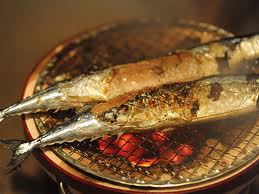 |
|
Perhaps the most quintessential fall delicacy is sanma, an oily fish most commonly (and deliciously) grilled over charcoal until crisp on the outside, and golden-flaky on the inside. Known as saury or mackerel pike in English, it is so tied into autumn that the character for autumn is included in its name: ??? (autumn-knife-fish).
Beyond this, there are Matsutake mushrooms that nobody really eats as they are so dang expensive, katsuo (bonita) sashimi, and kaki (persimmons) as a few more examples.
But above and beyond all that is the truism that, heck, it has just been so darn hot for so darn long that - as things cool down - just about everything tastes better.
And of course, this applies to sake. Fall is the traditional season for the release of new products, and tastings abound. Like, really abound. Like, overwhelmingly abound. Like, enough already with the abounding. And outside of the obligatory multitude of work-related tastings we must suffer (huh?) through, sake just seems to enhance every autumnal offering on any table, anywhere.
Hyperbole? Perhaps, just a bit. Nevertheless, autumn is surely almost everyone’s favorite season for enjoying sake. So don’t be left out, don’t be left behind, don’t miss out on sake’s outstanding potential with food, where ever you may be and whatever you may enjoy eating this fall.
And enjoy the newsletter.
John
PS1: There are but 5 seats remaining available for the Sake Professional Course to be held in San Francisco next month, October 24 to 26. See more below!
PS2: Don't forget that Sake's Hidden Stories and The Sake Notebook are both available for Kindle, Nook and the iPad! See details below.
|
Brewing Tanks
Sake is no longer brewed in wooden tanks. In fact, they began to be
phased out about 70 years ago and have pretty much been non-existent since just after the war. They were replaced by what is almost exclusively used today, ceramic-lined stainless steel, or sometimes, bare stainless steel.
Why were they phased out? A number of reasons. One, for the most part, brewers do not want to impart the woodiness into their sake (taru-zake is one exception). The line between character and idiosyncrasy is not just crossed, it is shattered with woody sake.
Next, the wood absorbs some of the sake during fermentation, so yields are a bit reduced – so much so that in days of olde brewers were given a break on taxes for sake absorbed by the wood. And the grain of the wood is very hard to clean thoroughly, and provides a hotbed for bacteria. With the ceramic lined tanks, brewers can just hose’em off when done.
Interestingly, long ago, when wood was used, they did not at that time
 |
|
either want to make their sake overly woody. So when a tank was made by the coopers that were such an indispensible part of the brewing team, it was not used to make sake right away. Rather, it sat around for a few years to air out, and/or was used to store water or rice. It did not earn the right to have anything ferment in it until the woody essences had slowly evaporated.
As always in the sake world, there are exceptions. There are a handful of brewers that do make sake in wooden tanks. But really, it is maybe 30 out of 1300, and they make perhaps one to three batches a year in wood. It is by no means a trend or movement, just an anomaly.
Which is not to diss the sake that comes from those tanks! It can be quite interesting, and perceptibly different. Surely just a bit of wood gets imparted, but often the flavors end up quite integrated and fine-grained.
Sake brewed in wooden tanks, what little of it there exists, is called ki-oke jikomi. While not very common, if you come across the term, now you know.
|
|
|
Something as Simple-sounding as Pasteurization
Isn't simple in the sake-brewing world!
Sake brewing can be, to put it mildly, complicated. Just getting from rice to
 |
|
ambrosia calls for milling-washing-soaking-steaming-molding-fermenting-pressing and a dozen other -ings along the way, each with deep complexities involved. And that is before we begin to consider the variations that each and every brewer applies.
But after that’s all done, once the completed sake drips out, we are done with the hard-to-understand stuff, right? I mean, we just have to store it, pasteurize it, cut it with water, and bottle it at some point, right? That’s pretty straightforward, right?
Wrong. The last few steps, as seemingly simple as they sound, exert massive leverage on the nature of the final product. How and when a sake is pasteurized, how long and at what temperature it is stored, and even whether it was stored in a tank or bottles - all these sound simple, but can make or break a quality sake, regardless of how good it might have been at pressing time.
We sat on his garden’s porch, the brewer and I, looking at a 350-year old
 |
|
pine tree. As I pondered the fact that that pine tree has been around exactly seven times as long as I have, we chatted about recent issues in brewing. The brewer in question is of stable (read: large-ish) size and of outstanding reputation, well deserved too. And he commented, “In fact, the biggest issue I face now in keeping one step ahead of the competition in terms of flavor quality is pasteurization. We keep tweaking things, and even after all this time it is still a bit of trial-and-error.”
At first this surprised me. I mean, you’d think they would have that down by now. Three hundred and fifty years should be enough to figure out something like pasteurizing your sake, right?
Wrong. It ain’t that simple, it never was, and it always needs tweaking. Let us consider some of the various ways it can be done.
 |
|
First, remember why sake is pasteurized. Momentarily heating it up will deactivate enzymes that would feed a form of lactic bacteria, and kills any of that bacteria that might be there as well. If sake is not pasteurized, it must be kept cold to not allow the enzymes to do much, or the chances of it going funky are significantly higher. But you knew that, right?
And nama-zake, or unpasteurized sake, is not unequivocally better than its pasteurized counterpart anyway. But that is a rant for another day.
Still, there can only be a couple of ways to go about this kind of a thing, right?
Wrong. There are so many variations to pasteurizing that it is daunting to even think about cataloging them. How many times it is done (once or twice?), to how high a temperature (about 65C for most), how quickly or slowly it is heated (could be very gently and slowly, could be instantaneous using a heat-exchanger), how fast or slowly it is cooled down, is it done en masse by the tank or to individual bottles, and if so, by showering those bottles with hot water or letting them sit in a trough of the stuff? And the timing! Sake matures more quickly when nama (unpasteurized) so the final maturity is hugely swayed by the timing of pasteurization.
One standard way is to run the sake through a coil that is submerged in hot water, as in the photo above. A more modern and much more expensive way is the flash-pasteurizer in the photo below.
All of these will vary from sake to sake, grade to grade, product to product. And of course, they will vary from brewer to brewer as well. What works for one brewer or sake product will not necessarily work for all, if any, others!
And they will change over time, either based on new research or
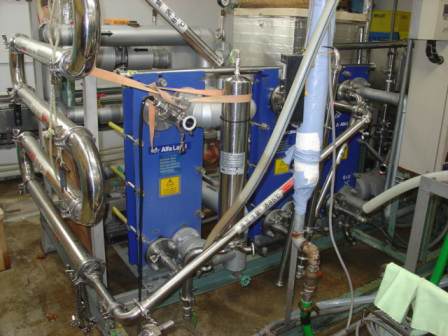 |
|
experimentation or on new market needs, i.e. consumers preferring the results of one method over the other. As one example, much sake these days is pasteurized only one time, and stored in bottles not tanks. This pain-in-the-arse method gives sake with a more discernible, fine-grained flavor to it. So if a kura’s sake suits this style (not all does!), this is a trend commonly followed.
The point here is that there are countless variations on how to do something as simple-sounding as pasteurization, and each brewer has his or her own methods and preferences. The standard one-line explanations of olde rarely apply anymore. But ask anyway, should you get the chance. And when you do, bear in mind that even the simplest-sounding steps in sake brewing are anything but simple.
Final note: I, personally, prefer pasteurized sake most of the time, as I can perceive more depth in it. But nama-zake (unpasteurized) can be zingy, fresh, young and lively. And certainly it can be more attention-getting, if often less subtle. By all means, explore both realms and decide your preferences.
|
|
Did You Know? Shio-Koji
'The Latest Fad in Japanese Cuisine
Surely readers are familiar with koji, steamed rice onto which a mold (aspergillus oryzae) has been ever-so-carefully propagated so as give the perfect amount and type of enzymes for starch-to-sugar conversion needed for each batch of sake. And, in all likelihood, we all remember that koji is used in many other things as well, including miso.
And lately, a new – or at least revived – use for koji has arisen and has gained massive popularity in modern Japanese cooking. Known as “shio koji,” or “salt koji,” it has likely been around for a while, but is now readily found in stores, either in completed form or in do-it-yerself ready form.
What is it? Or rather, how is it made? One starts with koji, i.e. steamed
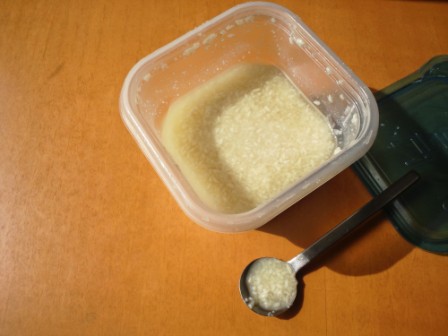 |
|
and dried rice with white-to-yellow mold grown all round it, so that it looks like rice with frosting. Next, a copious dose of salt is mixed in, as is a measured amount of water. Then, over the next one or two weeks, the mixture is kept at room temperature or so, and slowly ferments. While no alcohol is created, what we do end up with is lots of amino acids. Certainly, starches are converted to sugar, but the salt keeps that in check, and the umami richness that results from the amino acids makes shio koji so much more interesting than just plain salt.
How can you use it? The slurry-like condiment is an outstanding marinade for fish or meat, and can be used to pickle some vegetable as well. In fact, just try it any time you would use salt. It adds so much more depth and richness than straight-up sodium chloride.
It is also available in completed form, a grainy white liquid, that you can use right away. Once completed, it should keep several months in the refrigerator. There are plenty of sources on the internet for ways to use it beyond the above simple recommendations.
Finally: is the koji used n making it really the same stuff used in sake? In short, yes. But there are a million ways to make koji for sake, in terms of how much mold and what enzymes are present. Koji made for shio koji is a very rough, thick, opulent growth of the mold that one would likely never see used in sake brewing.
These days, a lot of sake brewers sell it directly. That’s how popular it is. Give it a try; it is surely available now at most Japanese supermarkets both in and outside of Japan. And be sure to enjoy some sake with whatever you make using it!
Interested in brewing sake at home? Check out Brewing Sake: Release the Toji Within, by Will Auld. Learn more here, or just buy it here
Want to help support Tohoku, and learn about Tohoku cuisine? Nothing goes better with Tohoku sake! Check out Elizabeth Andoh's ebook “Kibo” to do both!
|
|
 Announcements and Events Announcements and Events
Sake Professional Course
San Francisco, CA, October 24 ~ 26
The next Sake Professional Course will take place on October 24, 25 and 26 at Bentley Reserve in San Francisco, Caifornia. We are currently taking reservations for this course. Only five seats remain available as of today, September 7.
The Sake Professional Course, with Sake Education Council-recognized Certified Sake Professional certification testing, is by far the most intensive, immersing, comprehensive sake educational prog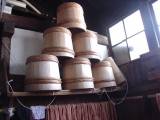 ram in existence. Three days of classroom lectures and tastings leave "no sake stone unturned." ram in existence. Three days of classroom lectures and tastings leave "no sake stone unturned."
The tuition for the course is $799. For more information about the daily schedule and to read a handful of testimonials, click here . Feel free to contact me directly at sakeguy@gol.com with any questions about the course, or to make a reservation. All marketing noise and shameless self-promotion aside, this course is already filling up quite fast. As such, interested parties should email me soon to make a reservation.
~~~~~~~~~~~~~~~~~~~~
 |
|
~~~~~~~~~~~~~~~~~~~~
Sake Professional Course Level II
The Level II Sake Professional Course, with SEC-supported Advanced Sake Professional testing, is scheduled for February 11- 15, 2013. Note that this course is only open to graduates of the Level I course. Should you be interested in attending, please email me with that request.
Sake Education Council Website
Please take a moment to check out the website for the Sake Education Council, the organization behind the Certified Sake Professional and Advanced Sake Professional certifications. We plan to grow steadily, strongly and continually, and we will need the support of all those that love sake to do so. Follow us through the "usual suspects" of social media.
Sake Homebrewer's Online Store
Please be sure to check out Homebrewsake.com for supplies, information and a forum, including lots of supporting information on everything from recipes to history. I have been meaning to mention this site and the gentleman behind it, Will Auld, but have repeatedly forgotten in past newsletters. The site is replete with instruction, augmented with videos, schedules, and more. If you are even remotely interested check this site out right away.
Don't forget the archives!
Older editions of this newsletter are archived here.
Really old editions are archived here.
|
 Sake Education Central Sake Education Central
Sake's Hidden Stories and The Sake Notebook are now available for the Kindle, Nook and iBooks!
The Sake Notebook is now available for the Kindle as well as the Nook. And now, it is available for iBooks on iTunes as well!
Sake's Hidden Stories too is now availabe on the Kindle as well as the Nook. And now, it is available for iBooks on iTunes as well!
Both are
less expensive than their original pdf version too. Now is your chance to learn more about sake from your phone or tablet! Check 'em out!
Sake Dictionary App for the iPhone, iPod and iPad
"For 99 cents, this app ROCKS!!"
-a satisfied customer
There you are, perusing a menu, or standing in front of a shelf of great sake, or perhaps reading a sake newsletter… and up pops one of those hairy, pesky sake terms in Japanese. You know you have heard it many times, but dammit, you just cannot remember what it means now…
No problem! Just whip out your iPhone or iPod and fire up your trusty old version of
The Sake Dictionary. In a matter of seconds, you’ll be amongst the cognoscenti once again. But… if only you could pronounce it properly. Now that would really rock!
Done! Just tap on the term and you will hear a clear example of how to pronounce the term in Japanese. Repeat it a couple of times and the term is yours for eternity, to toss about and impress your mates.
What’s more, it’s
less!
Less than what it cost before, much less. Like less than one-seventh less. For a limited time only, the audio-enhanced version of The Sake Dictionary iPhone app is available for a mere $0.99.
|
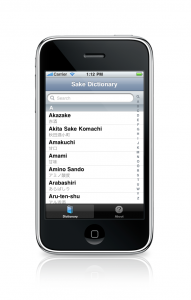 |
|
|
The Sake Dictionary is a concise little package of all the terms you might ever come across when dealing with sake. Almost 200 of them - including sake grades, rice variety names, seasonal sake terms, special varieties, rare types, post-brewing processing words and the myriad terms used in sake production - many of which are not even familiar to the average Japanese person on the street - are listed up here with concise, useful and clear definitions and the written Japanese version as well. And now, with the new audio component, you can listen and learn just how to pronounce those terms properly.
Start to toss around Japanese sake terms like you were raised knowing them! Gain a level of familiarity hitherto unimaginable! Avoid frustrating paralysis when faced with a sake-related purchase!
Get your copy of The Sake Dictionary now and never be confused by sake terms - or how to pronounce them - again.
Get it here: http://itunes.com/apps/sakedictionary
(Note if you have already purchased it, this upgrade to the audio version is free. Just go to iTunes and get it!)
|
Are you not getting this newsletter? I realize that is like asking that
"those not present please raise your hand," but for future reference, should you spontaneously stop receiving this newsletter, please go here and sign up again. Should that not work, please go to www.sake-world.com.
Email newsletter services are very careful not to be considered spam enablers, but the problem is that often very valid email addresses come back bounced as invalid. It is an unavoidable problem. So if you or someone you know is not getting this, or stop(s) receiving it inexplicably, please do take a moment to double check that you are still subscribed.
Sincere apologies for the hassle, mixed with gratitude for reading this newsletter. |
I hope you have found the above information helpful and entertaining. For more information about all things sake, please check out www.sake-world.com. Until next month, warm regards, and enjoy your sake. 
Questions and comments should be directed to John Gauntner, at this email address.
All material Copyright, John Gauntner & Sake World Inc.
Regards,
John Gauntner
Sake World, Inc
 . . 
|
|
